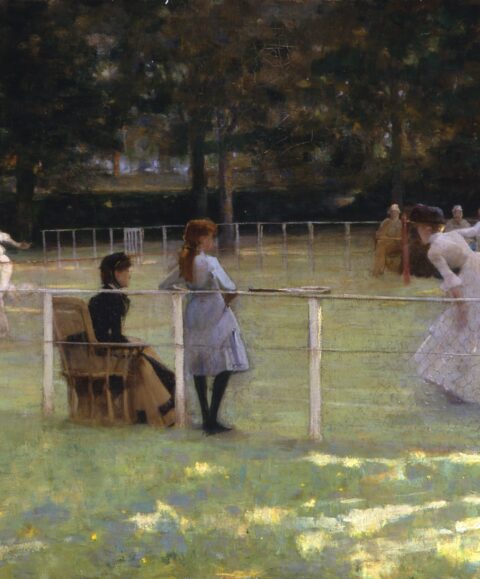
The Glasgow Boys

- 22 September 2015 till 7 February 2016
- Drents Museum
Scottish Impressionism 1880-1900
With over 80 paintings and 40 works on paper, the Drents Museum presents one of the leading groups of British artists from around 1900: The Glasgow Boys. Inspired by the French impressionists and the Barbizon and Hague School artists, these painters came to the fore around the close of the 19th century. For the first time since 1900, a retrospective exclusively devoted to these Scottish artists will be held outside Great Britain.
The Glasgow Boys
At the end of the 19th century, a group of some twenty highly diverse painters of roughly the same age became friends. They called themselves ‘The Boys’, challenged the establishment and set out across Scotland and France to paint. They studied in Paris studios and even travelled to Japan. The great strength of the Glasgow Boys was their ability to absorb various influences and transform these into fresh, innovative art.
Unique pageant of ten Glasgow Boys
The exhibition focuses on the group’s heyday between 1880 and 1900. Works will be shown of the ten most important Glasgow Boys: James Guthrie, Edward Walton, Joseph Crawhall, James Paterson, John Lavery, William York MacGregor, George Henry, Edward Hornel, Arthur Melville and William Kennedy. The exhibition pays attention to their development, interests, painting techniques, travels and friendships. The Glasgow Boys is the first exhibition in the series Art Around 1900 in International Perspective at the Drents Museum.
French Impressionism
The young Scottish painters were inspired by the work of French Impressionists such as Edouard Manet and Edgar Degas, as shown by their decision to paint themes from ‘modern’ life. Other typical aspects of Impressionism such as the experience of the moment (impression), the sketch-like method and a focus on effects of light and colour are also found in the work of these Scotsmen. Following the French Impressionists, they enjoyed taking their easels out of doors to paint en plein air.
Barbizon and The Hague School
Inspired by the Barbizon and Hague School painters, the Glasgow Boys adopted a naturalist style, as seen in their faithfully rendered Scottish landscapes and images of rural life, depicted in subdued colours. The exhibition thus also includes work by the French naturalist Jules Bastien-Lepage and the Hague School artists Jozef Israëls, Anton Mauve, Willem Roelofs and Matthijs Maris.
National and international collaboration
For this major international exhibition, the Drents Museum has been working in close cooperation with museums in Glasgow, Edinburgh and Aberdeen. Works from various Dutch museums such as the Van Gogh Museum, Gemeentemuseum Den Haag, Museum Amsterdam and Museum Arnhem will also be exhibited.
Publication
The Glasgow Boys exhibition is accompanied by a book of the same title, published by WBOOKS in Zwolle. The volume is available from the Museum Shop for € 24,95.

Related pages
-
Antonio López (online exhibition)
![]()
-
Menyala (online exhibition)
![]()
-
Microcosm - The world in a Wunderkammer
![]()
-
The Largest Doll’s House in the Netherlands
![]()






